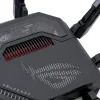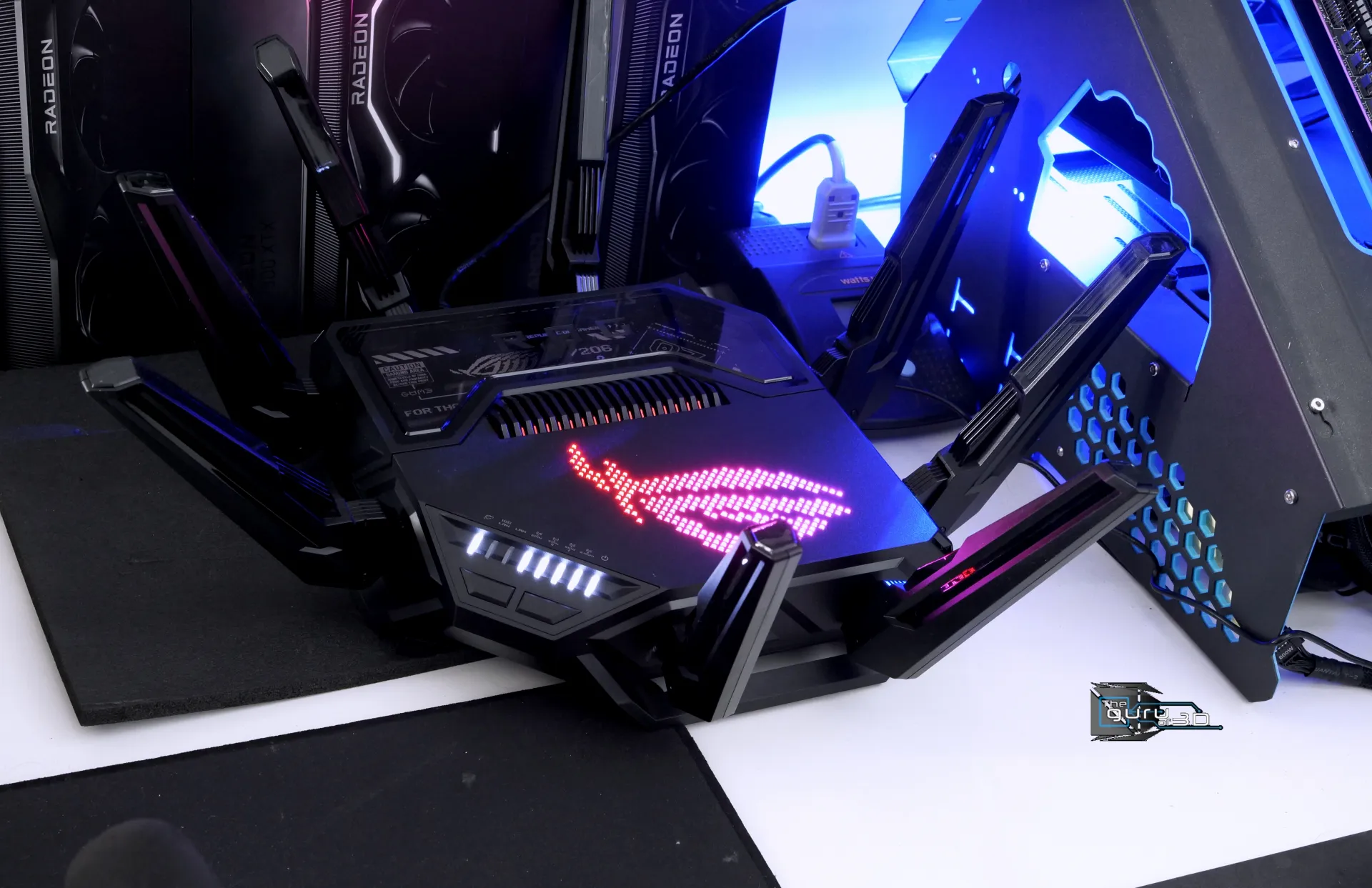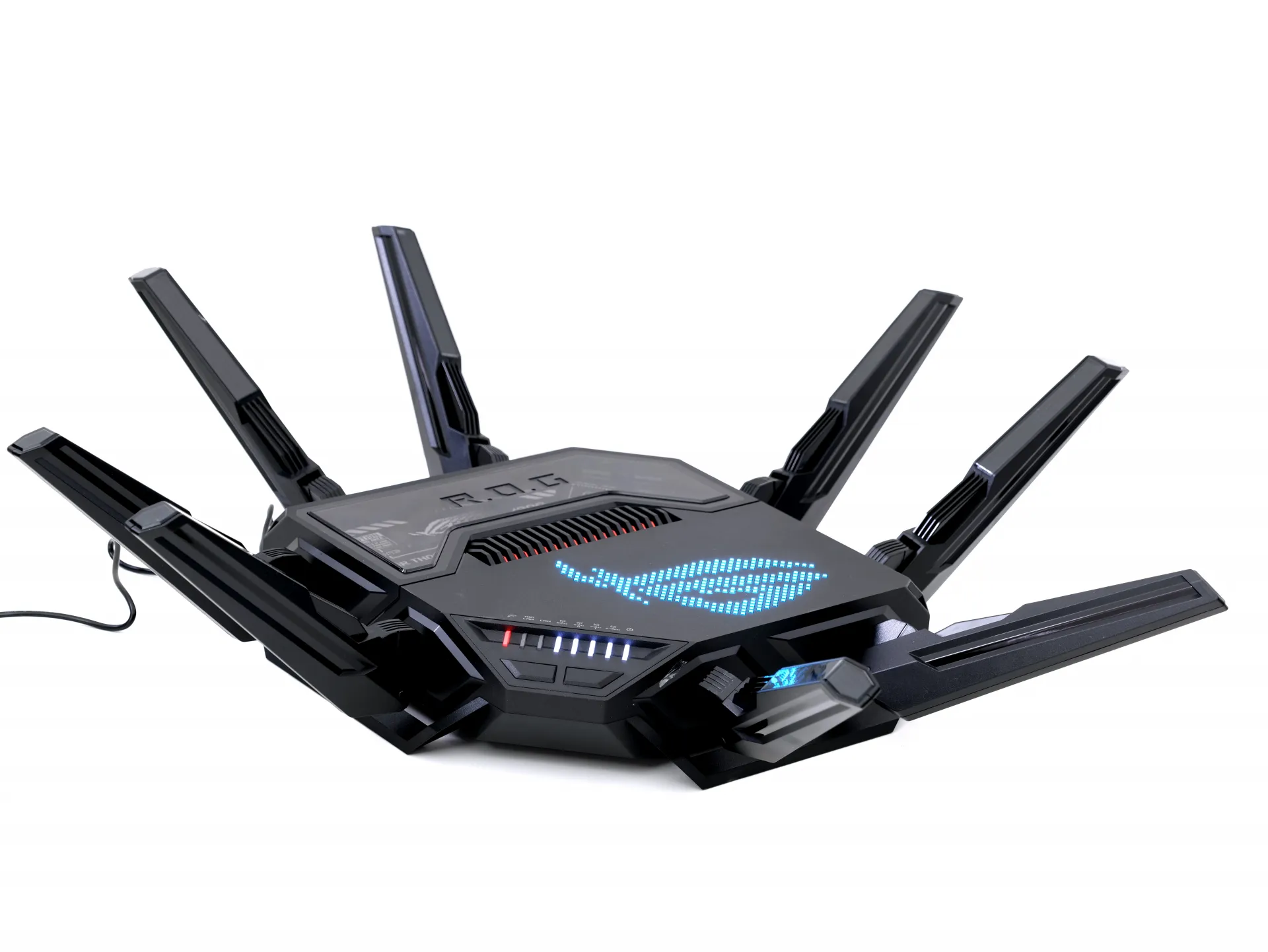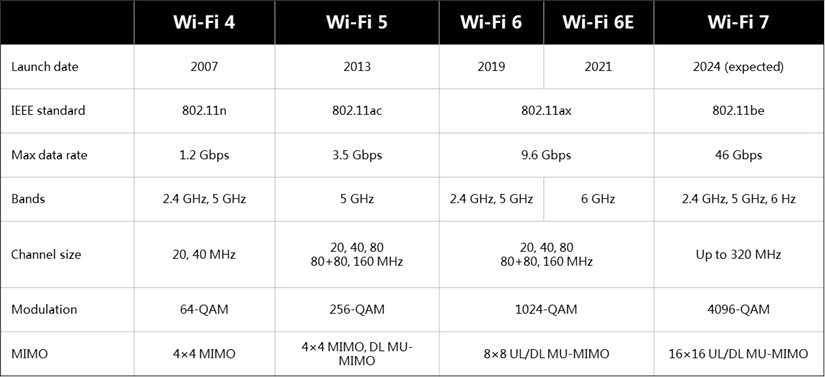Introduction
In today's article, we'll dive a little deeper into the new WiFi 7 (802.11be). Over the years we have seen many developments for WIFI, however we deem Wi-Fi 7 to be a big step forward. Today we'll test this with the latest ASUS Wi-Fi 7 router available, the ROG Rapture GT-BE98. ASUS is among the better-known brands in the PC gaming industry, offering various devices ranging from graphics cards to gaming monitors, mice, and keyboards. The company has also been producing gamer-focused routers under its Republic of Gamers brand in recent years. The ROG Rapture GT-BE98 is the company's first WiFi 7 (802.11be) quad-band gaming router, and it leverages the full potential of WiFi 7 with 320 MHz channel support in the 5/6 GHz band to provide much faster speeds than previous-generation WiFi 6. Wi-Fi 7 is set to offer significant advancements in speed and bandwidth compared to Wi-Fi 6, which has only recently become widely adopted. Wi-Fi 7 will enhance the utility of the third 6GHz channel, a feature introduced in the Wi-Fi 6E substandard.
Wi-Fi 7, like its predecessor, operates across three frequency bands: 2.4GHz, 5GHz, and 6GHz. However, a significant advancement in Wi-Fi 7 is the extensive utilization of the 6GHz band, significantly enhancing the data pipeline compared to the implementation in Wi-Fi 6E. The trick lies into the fact that the key feature of Wi-Fi 7 is its capability to simultaneously use two channels (named MLO), thus combining 5GHz and 6GHz frequencies with a total bandwidth of 320MHz. This configuration is designed to substantially increase throughput, thereby facilitating higher data transmission speeds. If you have wired ethernet (LAN/WAN) you'll likely run it a 1 Gbps (1 Gigabit per second). With Wi-fi 7 you'll be able to fairly easily pass that value, without the usage of wires. The nearness of the 6GHz band to the 5GHz band enables the formation of a single, broader channel. This configuration minimizes latency and maximizes performance, an aspect central to Wi-Fi 7's Multi-Link Operation (MLO). In regions where the 6GHz band is unavailable due to regulatory constraints, Wi-Fi 7 adapts by offering an alternative configuration of two 5GHz channels (if your router supports that), each with a bandwidth of 240MHz. This setup still ensures enhanced speeds, aligning with Wi-Fi 7's focus on improving throughput across varying regulatory environments.
The key elements to reach higher throughput are an increased channel bandwidth of 320 MHz, up to 16 spatial streams and 4096QAM modulation. 4K QAM modulation packs more data into transmissions, resulting in up to 20% higher peak data rates. Furthermore, with two additional features – Multi-Link Operation and Multi-RU Puncturing – the GT-BE98 Pro can deliver faster and more efficient wireless connections. The router incorporates 256MB of flash memory and 2GB RAM. Notable features tailored for gamers and advanced users include mesh networking capabilities, game boost technology, OpenNAT, and WTFast.
| ROG Rapture GT-BE98 | RT-BE96U | |
|---|---|---|
| Antennas | 8 | 8 |
| Wi-Fi Standard | Wi-Fi 7 | Wi-Fi 7 |
| Wi-Fi Bands | 2.4 GHz: up to 1376 Mbps (4096 QAM) | 2.4 GHz: up to 1376 Mbps (4096 QAM) |
| 5 GHz: up to 5762 Mbps (4096 QAM + 160 MHz) | 5 GHz: up to 5762 Mbps (4096 QAM + 160 MHz) | |
| 5 GHz: up to 5762 Mbps (4096 QAM + 160 MHz) | 6 GHz: up to 11,525 Mbps (4096 QAM + 320 MHz) | |
| 6 GHz: up to 11,525 Mbps (4096 QAM + 320 MHz) | ||
| CPU | 2.6GHz quad-core | 2.6GHz quad-core |
| Memory | 256 MB Flash, 2 GB DDR4 RAM | 256 MB Flash, 2 GB DDR4 RAM |
| Ports | 1 x 10 Gbps WAN/LAN, 2 x 10 Gbps LAN, 4 x RJ45 10/100/1000 Mbps LAN, 1 x USB 3.0, 1 x USB 2.0 | 1 x 10 Gbps WAN/LAN, 1 x 10 Gbps LAN, 4 x RJ45 10/100/1000 Mbps LAN, 1 x USB 3.0, 1 x USB 2.0 |
Asus has recently expanded its router lineup with WIFI7 routers, ROG Rapture GT-BE98 (Pro) and the RT-BE96U, both supporting the latest Wi-Fi 7 standard. The ROG Rapture GT-BE98 is notable for its unique crab design, featuring eight prominent antennas and an inverted spider-like structure. An creative design element includes a partially transparent top casing, allowing visibility of the router's internal components.
The ROG Rapture GT-BE98 stands out with its advanced capabilities and design. However, for users with less demanding wireless requirements, Asus has also unveiled the RT-BE96U. This model embraces Wi-Fi 7 technology but offers a more streamlined feature set with three wireless bands, including a single (not dual) 5762 Mbps 5GHz band. In terms of hardware, the RT-BE96U shares the same processor, RAM, and storage specifications as the ROG Rapture GT-BE98. However, it differs in connectivity options, featuring one less 10 Gbps LAN port than its higher-end counterpart. The RT-BE96U also presents a visually striking design, sporting eight antennas in a sleek black and grey color scheme.
The router's antenna configuration consists of a 2x2 setup at 2.4 GHz and a 4x4 setup at both 5 GHz and 6 GHz frequencies, incorporating MU-MIMO technology. Notably, in the 6 GHz band, the router leverages the capabilities of Wi-Fi 7 to utilize a channel width of 320 MHz. This enhancement is exclusive to Wi-Fi 7 and embodies a significant increase from the previous maximum channel width of 160 MHz, effectively doubling the potential maximum data transfer rate. The specific antenna configuration of at 2.4 GHz, 5 GHz and 6 GHz, combined with all MIMO streams enabled by Wi-Fi 7 technology, allows the router to support multi-gigabit per second data transfer rates. This technical capability represents a notable advancement in wireless network performance and efficiency. You're still on wifi though, so distance and distortion will always matter. The router is designed with eight external antennas to ensure optimal coverage. On the connectivity front, it hosts a variety of wired ports: 10 Gigabit WAN/LAN, four 2.5 Gigabit WAN/LAN. Additional interfaces include a USB 3.2 Gen 1 port and a USB 2.0 port. The entire unit weighs approximately 2 kg. ASUS not only offers Wi-Fi 7 according to 802.11a/b/g/n/ac/ax/be as router function, you can also configure it as an access point, as well as a mesh 10 Gigabit and 2.5 Gigabit Ethernet ports effectively eliminate the bottleneck on the LAN side.




